Continuing from Part 2. Installing a Holley Sniper 2 on the jeepfan.com 1978 CJ-5 AMC 360 V8. A log time ago the jeepfan.com 1978 CJ-5 had a Holley Pro-Jection throttle body injection (TBI) on its AMC 360 V8 that worked quite well, until it didn’t. At that point the TBI was removed and an old school Holley Truck Avenger 4 barrel carburetor was installed with a Carter low pressure fuel pump.
Where are we now?
All the to do list items are completed and the Jeep was ready for its first start. The throttle body was installed, all the wiring along with the sensors are installed. The fuel lines as well as the fuel pump is installed. All the connections and fasteners were checked so we are ready to see if this thing will start.
First, before starting turn on the key and allow the display to come up and run the setup wizard. In this you will input specifics to your engine like engine size, ignition type and idle speed. Once you enter that info the system saves the information and you will hear the fuel pump run to prime the system. This is a good time to check for leaks.
The low roar of the air moving through the throttle body was unexpected along with the impressive acceleration.
First Start
Seeing that we had no leaks we hit the key and the Jeep started up right away. You could hear the system adjusting to find idle. We needed to make some idle screw adjustments to get things smoothed out and we let the Jeep run to get up to temperature.
You could watch the display and see how things were reading. After the Jeep came up to temperature we could see some adjustment was needed for the idle.
Idle Air Control – IAC
The idle air control is a small opening on the rear side of the throttle body above the rear two plates. The idle air control is essentially a small computer controlled air passage that allows the control of idle without moving the throttle plates. Many people confuse this part of the system with a traditional carburetor and attempt to adjust idle using the screw. Not so.
The IAC should read between 6-12% at idle when the engine is at operating temperature. To adjust this shut off the engine and turn in the throttle screw one turn. This will cause the IAC to read 0% and the engine will idle fast. While watching the IAC reading turn out the screw until target idle is reached and the IAC reading is in the recommended range. Now it’s set. Once we performed this the Jeep started correctly and idled correctly even from a complete cold start.
IAC pics coming soon
If you can’t get the IAC correct, meaning that it’s at zero even when adjusting it’s possible that there is a vacuum leak, that would be the first place to check.
Tuning?
What’s great about the Sniper is that it pretty much adjusts itself as needed. There are options for deeper tuning that would require a computer connection. For now we are going to leave it alone and see how the Jeep performs over time.
Fuel Pulsing
The fuel injectors are constantly opening and closing very quickly. This has an oscillating effect on the fuel lines that can cause pulsing. This is normal but is more pronounced on EFI vehicles with mostly rigid lines. The PTFE lines are included in those type of lines and in our instance there was a very pronounced ticking/pulsing in the fuel line that was very obvious within the Jeep. It sounded like something was tapping on the firewall.
We picked up a fuel pulse damper from Radium Engineering. This small component goes inline on the fuel system and it absorbs the oscillation. This little thing did some magic and took away the sound and feeling. You can still hear the fuel injectors but it’s very minimal.
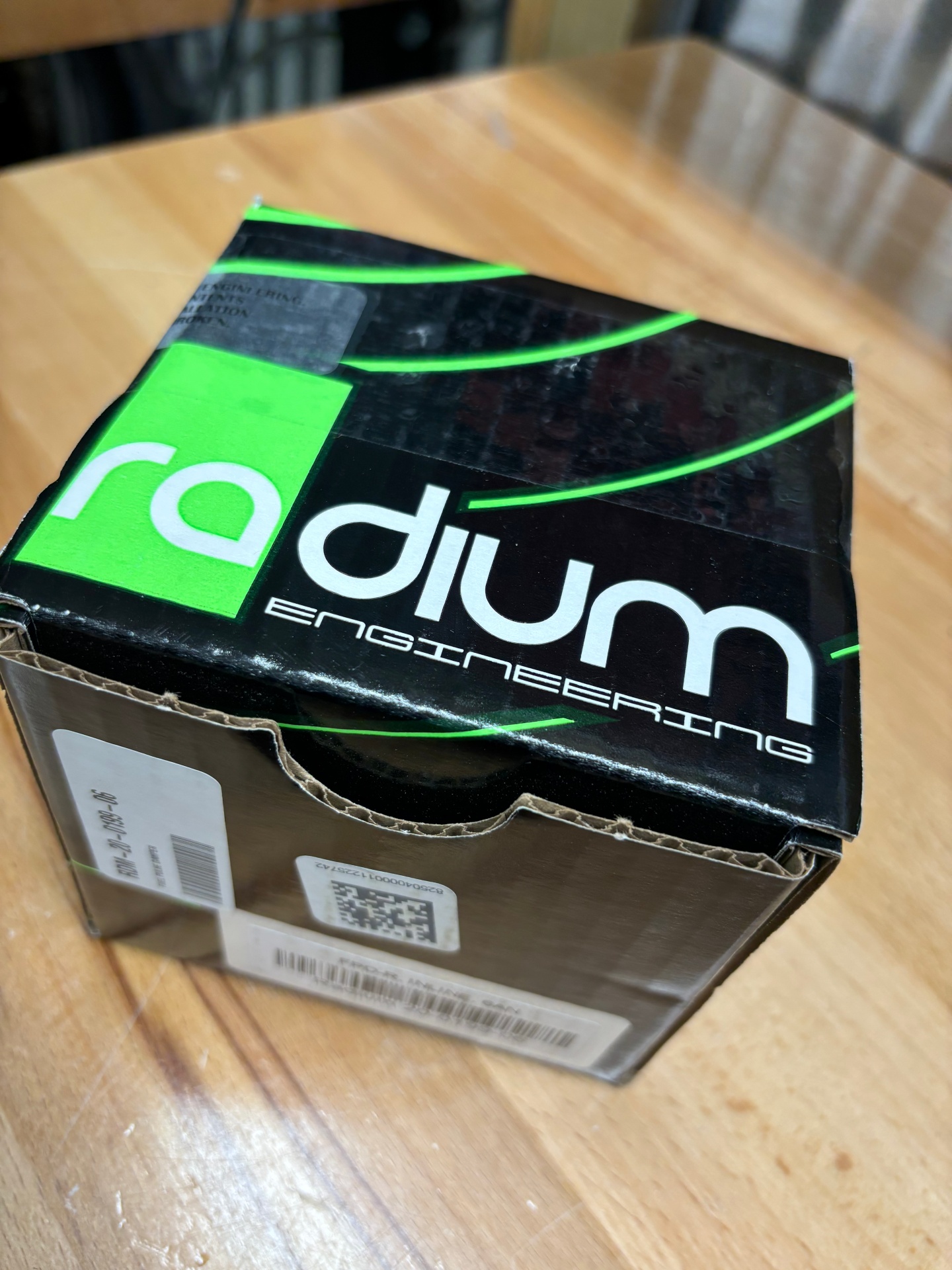
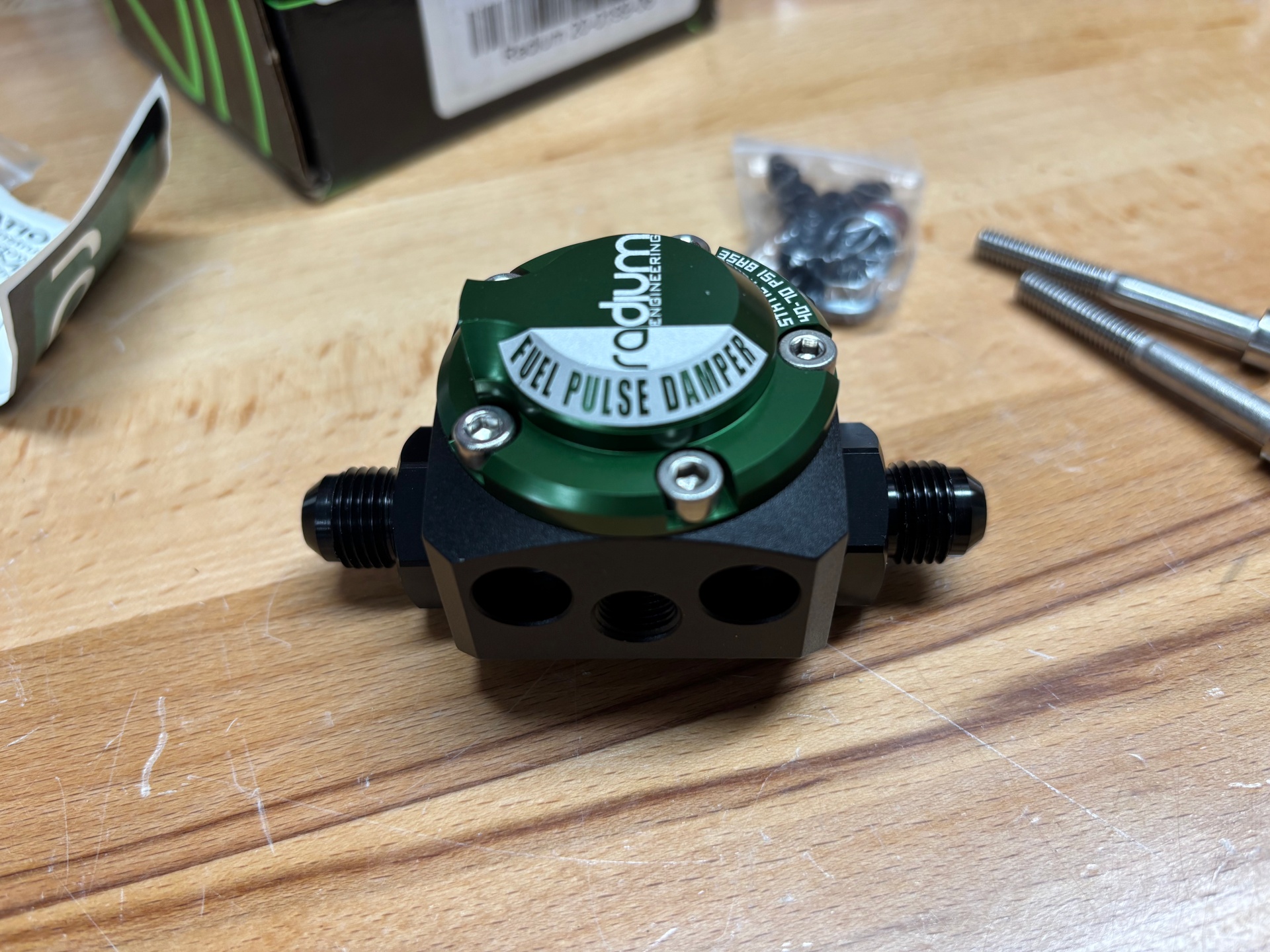
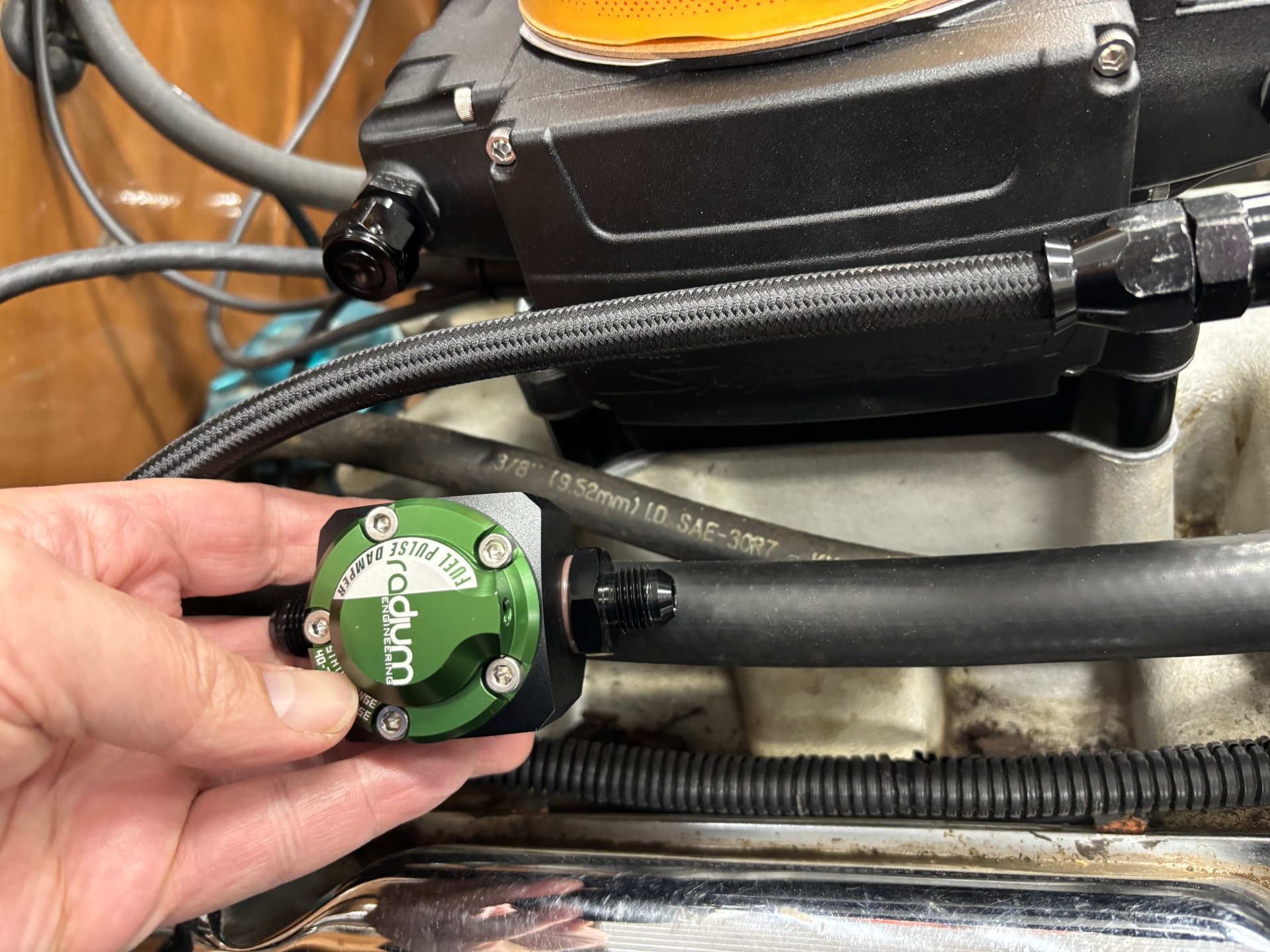
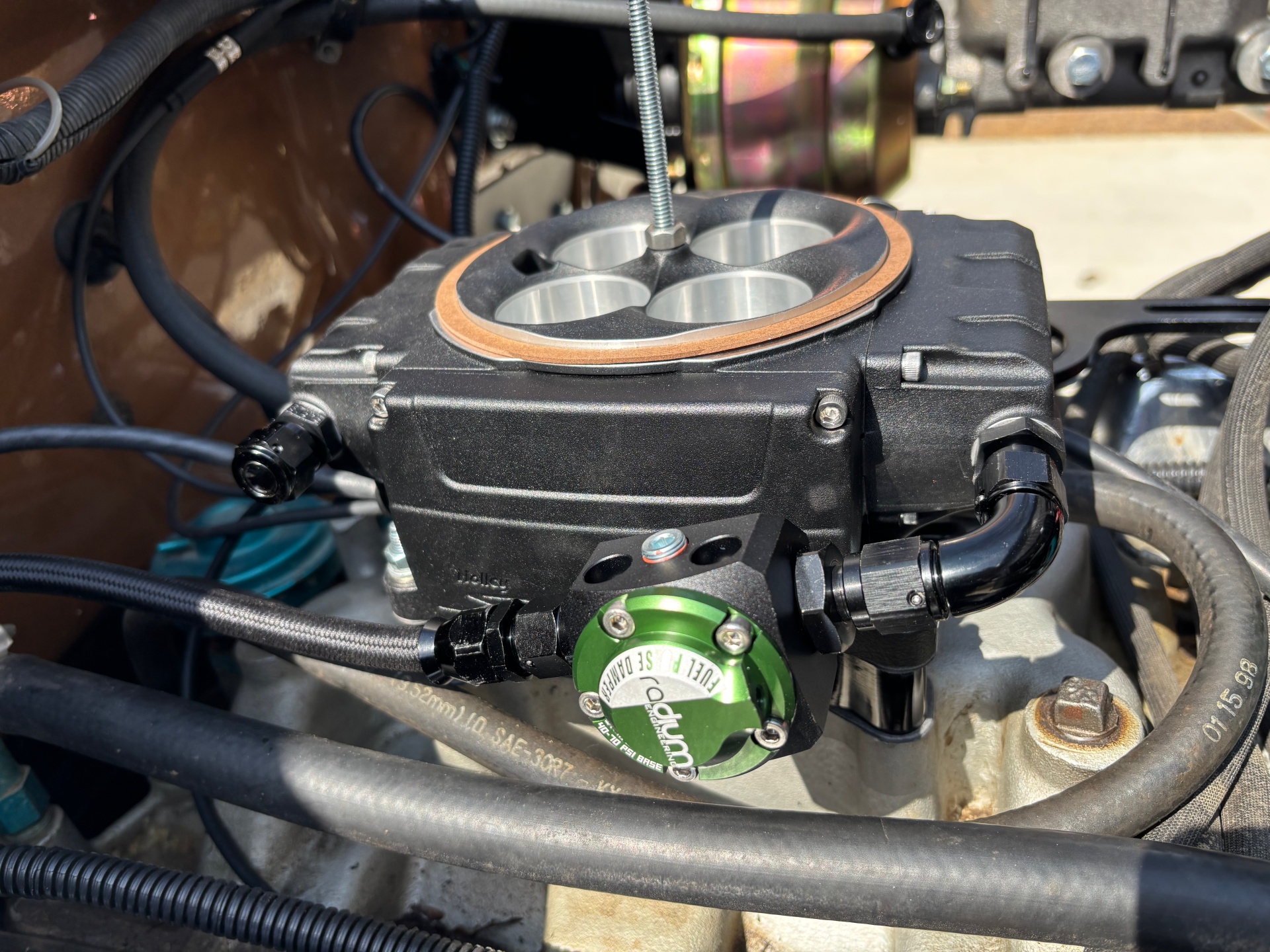
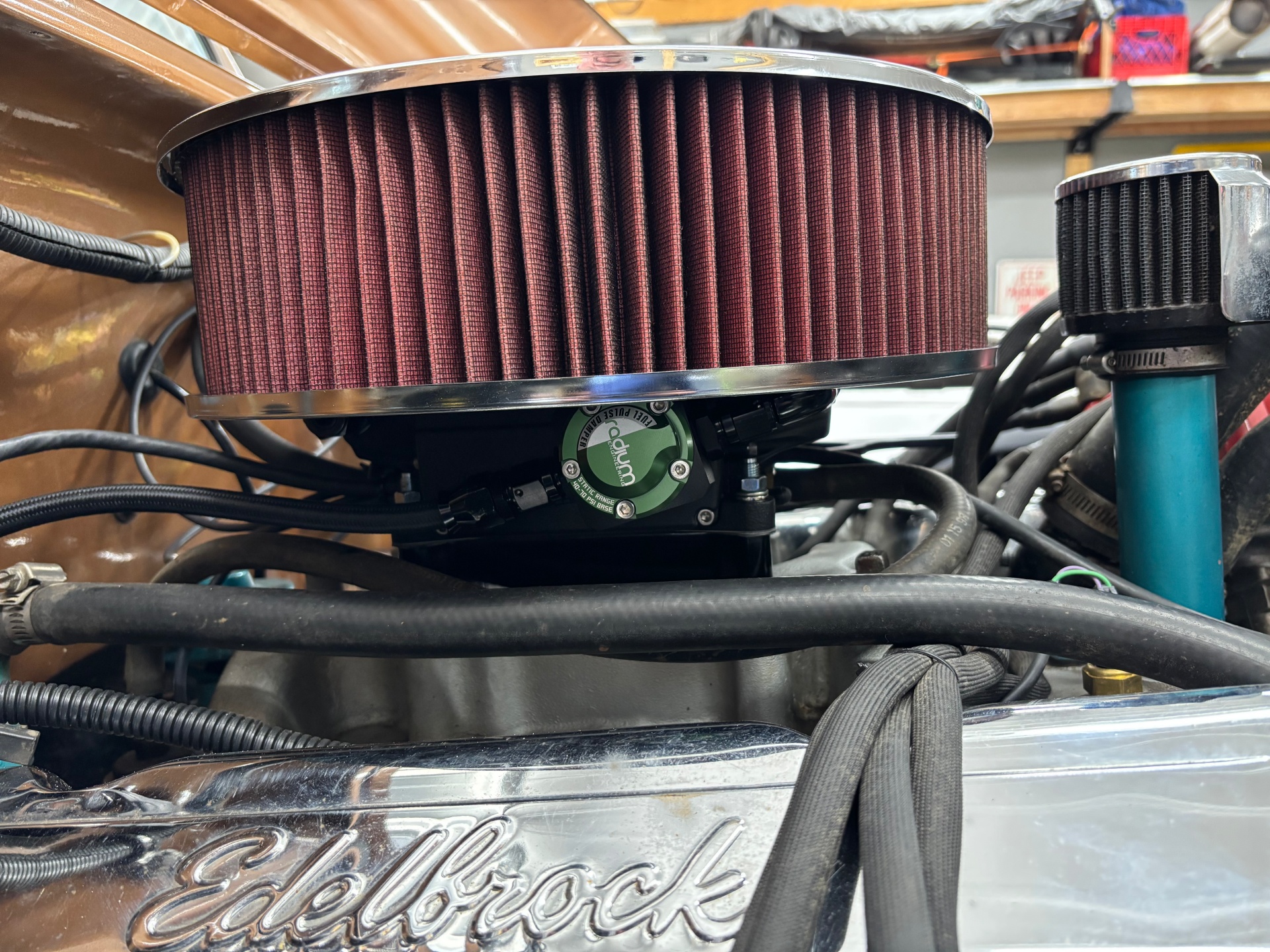
Adding this just required some change in the fittings.
Fuel System Venting
Almost all modern vehicles that run on gasoline use a charcoal fuel vapor venting system. Put simply, vapors from the fuel tank are run to a charcoal canister that absorbs the vapors. When the engine is running and at certain times the vapors are pulled into the engine through the purge port and burned off. Retrofitting an old vehicle to use this system can be tricky but we learned of a trick that’s commonly used in the street rod world. Check out this article Fuel System Venting with A Custom Charcoal Canister.
Wrapping It Up and Thoughts
This was a big project and many things were done that were outside of the scope. Cleanup of wiring, removal of some old stuff and just cleaning. But it felt good to give the old CJ a considerable amount of attention.
We went through all the stuff we touched making sure everything was neat, secure, tight and not leaking. A few heat shields were added to keep things safe from exhaust temperatures. Things will be rechecked for a while to make sure.
The Important Stuff
Anyway, the result is what we were seeking and the big deal items seem to be solved. Number one, the Jeep starts with no effort other than turning the key. No choke, no pumping, no priming, no fast idle. Even when hot the Jeep starts immediately. Number two, the smell of “old Jeep” is gone. There are no longer fumes of an overly rich engine that gas you out and stick to your hair and clothing. There’s minimal smell in fact, which is really nice.
If you remember that I mentioned the less than stellar performance from the carburetor I don’t mean to bash on it. It’s a great carb and with some tuning it could probably be much much better. It’s just nice how the Sniper just takes care of itself and no further tuning is really needed.


Performance
Throttle response is drastically improved. Just a crack of the throttle and the engine is ready to go. Driving is strong and predictable. There’s no bog or lag when putting your foot down. Running through the gears is smooth and there feels like an increase in low end torque. The Jeep is even more a pleasure and fun to drive. We are calling this mod a complete success.
To tell the truth the first time I really laid into the throttle it actually scared me. The feeling and the sound were unexpected. The low roar of the air moving through the throttle body was unexpected along with the impressive acceleration. It may be the quickest I’ve ever seen this Jeep.
Holley Sniper 2 – Holley’s EFI System
Radium Engineering – Fuel Pulse Damper
Summit Racing – Parts for Everything

